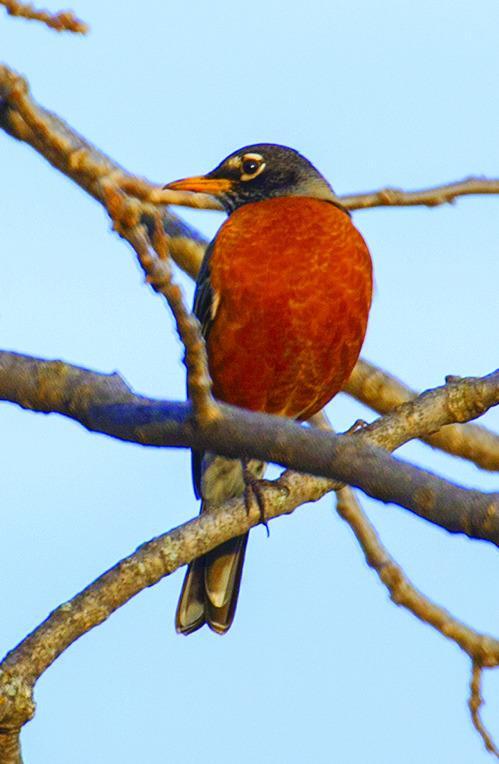
American robins are distant cousin to common European robins.
Photo from Metro Creative

Exploring Nature: American Robin
2023 is shaping up as the year of the robin for me.
I have been blessed with a group of about six birds who show up in my backyard daily and drink from my sturdy concrete birdbath. I delight in their colorful reddish orange breasts and admire their blackstreaked white throats.
Specifically, these are American robins, so named to differentiate them from other robin species that occur throughout Latin America and the Caribbean. Three of these “other” species have been spotted as vagrants along the Rio Grande in Texas, including the clay-colored robin.
Largest bird in the thrush family, the American robin is found throughout North America and is the state bird of Connecticut, Michigan and Wisconsin. It nests from Alaska down to Mexico.
In winter, the robin withdraws from the northern portion of its range and heads south — that’s when we see it in our area. Its return to the north is much anticipated and is heralded as the first sign of spring. For many northerners, winter is not over until the robin sings.
And sing it does — a rich, caroling song of lilting phrases.
Hard to believe, but robins are relative late-comers to portions of our state. They showed up first in the forested eastern quarter, then between 1925 and 1940, they increased in north Texas and even spread to Waco and Austin.
They did not reach Corpus Christi until 1967.
In some southern locales, such as Florida, robins congregate in large flocks of hundreds of birds, feeding on worms, berries and insects and massing in trees to roost at night.
In spring, male scouts head north, to be followed by masses of robins seeking new feeding territories.
The American robin, by the way, was named by homesick colonists for the robin that occurs commonly across Europe. The two are distantly related and both have orange breasts.
I hope you are seeing your share of these handsome birds and that in your neighborhood the red, red robins are bobbob- bobbing along.











